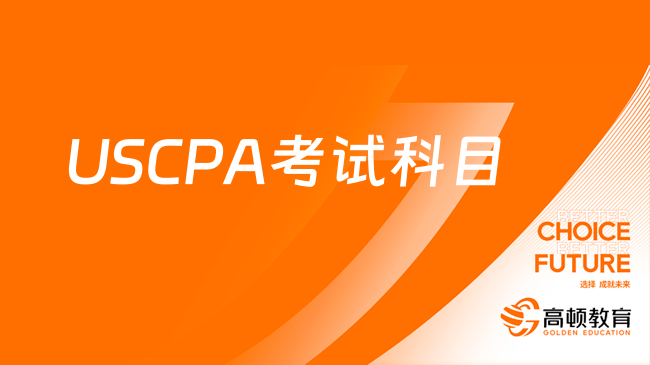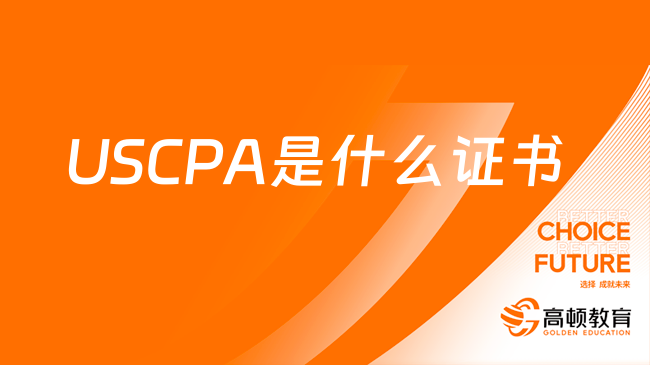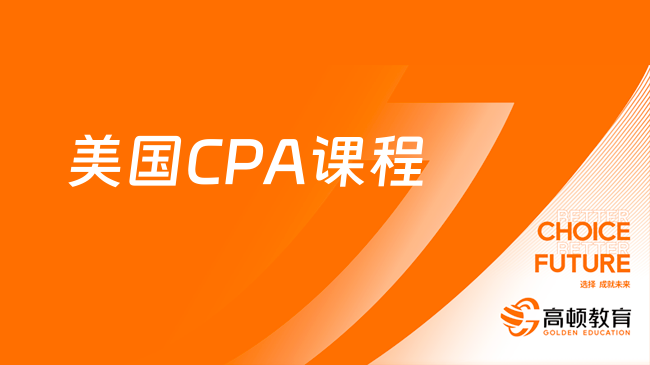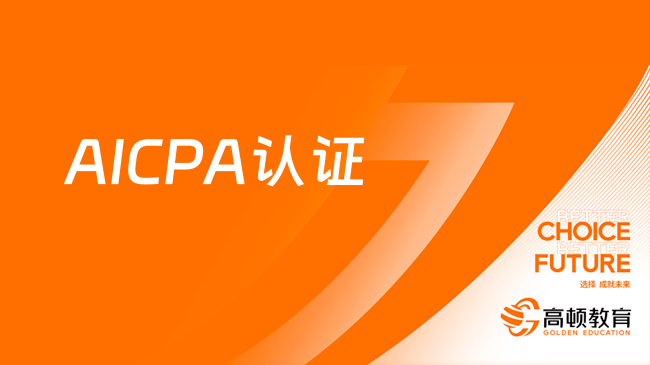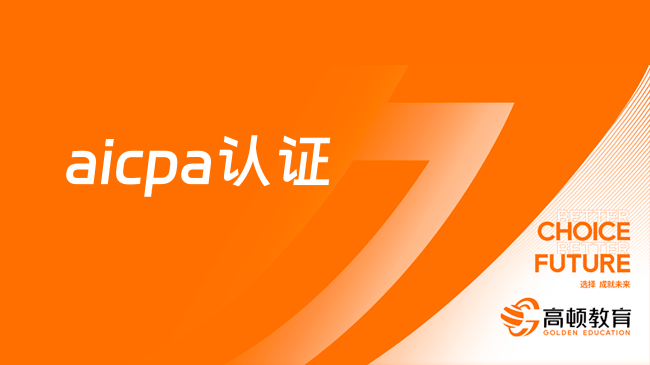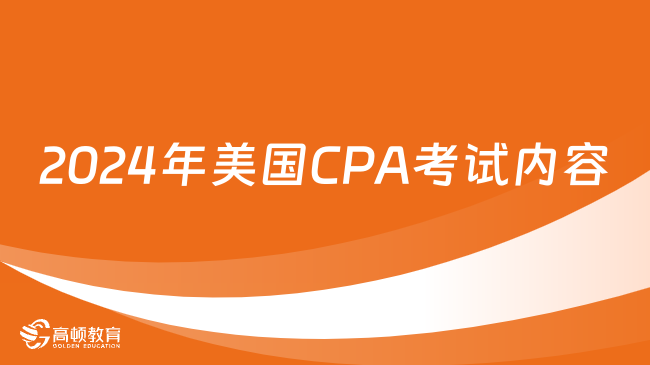USCPA AUD考试内容是什么?
来源:
高顿网校
2016-10-26
2017年的USCPA考试离我们并不远。正在紧张备考、或是即将开始准备复习的考生,如何搞定AUD这门课?高顿网校USCPA小编找到了AUD考试内容,供广大USCPA考生参考。
The Auditing and Attestation section tests knowledge and understanding of the following professional standards:Auditing standards promulgated in the United States of America(related to audits of an“Issuer”(a public company),a“Nonissuer”(an entity that is not a public company),governmental entities,not-for-profit entities,and employee benefit plans,standards related to attestation and assurance engagements,and standards for performing accounting and review services.
Candidates are expected to demonstrate an awareness of:(1)the International Auditing and Assurance Standards Board(IAASB)and its role in establishing International Standards on Auditing(ISAs),(2)the differences between ISAs and U.S. auditing standards,and(3)the audit requirements under U.S. auditing standards that apply when they perform audit procedures on a U.S. company that supports an audit report based upon the auditing standards of another country,or the ISAs.
This section also tests knowledge of professional responsibilities of certified public accountants,including ethics and independence.
Candidates are also expected to demonstrate an awareness of:(1)the International Ethics Standards
Board for Accountants(IESBA)and its role in establishing requirements of the International
Federation of Accountants(IFAC)Code of Ethics for Professional Accountants,and(2)the independence requirements that apply when they perform audit procedures on a U.S. company that supports an audit report based upon the auditing standards of another country,or the ISAs.
In addition to demonstrating knowledge and understanding of the professional standards,candidates are required to demonstrate the skills required to apply that knowledge in performing auditing and attestation tasks as certified public accountants. The outline below specifies the tasks and related knowledge in which candidates are required to demonstrate proficiency:Candidates are also expected to perform the following tasks:
·Demonstrate an awareness and understanding of the process by which standards and professional requirements are established for audit,attestation, and other services performed by CPAs,including the role of standard-setting bodies within the U.S. and those bodies with the authority to promulgate international standards.
·Differentiate between audits,attestation and assurance services,compilations,and reviews.
·Differentiate between the professional standards for issuers and nonissuers.
·Identify situations that might be unethical or a violation of professional standards,perform research and consultations as appropriate,and determine the appropriate action.
·Recognize potentially unethical behavior of clients and determine the impact on the services being performed.
·Demonstrate the importance of identifying and adhering to requirements,rules,and standards that are established by licensing boards within their states, and which may place additional professional requirements specific to their state of practice.
·Appropriately apply professional requirements in practice,and differentiate between unconditional requirements and presumptively mandatory requirements.
·Exercise due care in the performance of work.
·Demonstrate an appropriate level of professional skepticism in the performance of work.
·Maintain independence in mental attitude in all matters relating to the audit.
·Research relevant professional literature.
I.Auditing and Attestation:Engagement Acceptance and Understanding the Assignment(12% - 16%)
A.Determine Nature and Scope of Engagement
B.Consider the Firm's Policies and Procedures Pertaining to Client Acceptance and Continuance
C.Communicate with the Predecessor Auditor
D.Establish an Understanding with the Client and Document the Understanding
Through an Engagement Letter or Other Written Communication with the Client
E.Consider Other Planning Matters
1.Consider using the work of other independent auditors
2.Determine the extent of the involvement of professionals possessing specialized skills
3.Consider the independence,objectivity,and competency of the internal audit function
F.Identify Matters Related to Planning and Prepare Documentation for Communications with Those Charged with Governance
II.Auditing and Attestation:Understanding the Entity and Its Environment(including Internal Control)(16% - 20%)
A.Determine and Document Materiality
B.Conduct and Document Risk Assessment Discussions Among Audit Team,Concurrently with Discussion on Susceptibility of the Entity's Financial Statement to Material Misstatement Due to Fraud
C.Consideration of Fraud
1.Identify characteristics of fraud
2.Document required discussions regarding risk of fraud
3.Document inquiries of management about fraud
4.Identify and assess risks that may result in material misstatements due to fraud
D.Perform and Document Risk Assessment Procedures
1.Identify,conduct and document appropriate inquiries of management and others within the entity
2.Perform appropriate analytical procedures to understand the entity and identify areas of risk
3.Obtain information to support inquiries through observation and inspection(including reading corporate minutes, etc.)
E.Consider Additional Aspects of the Entity and its Environment,including:Industry,Regulatory and Other External Factors;Strategies and Business Risks; Financial Performance
F.Consider Internal Control
1.Perform procedures to assess the control environment,including consideration of the COSO framework and identifying entity-level controls
2.Obtain and document an understanding of business processes and information flows
3.Determine the effect of information technology on the effectiveness of an entity's internal control
4.Perform risk assessment procedures to evaluate the design and implementation of internal controls relevant to an audit of financial statements
5.Identify key risks associated with general controls in a financial IT environment,including change management,backup/recovery,and network access(e.g. administrative rights)
6.Identify key risks associated with application functionality that supports financial transaction cycles,including:application access control(e.g.administrative access rights); controls over interfaces,integrations,and e-commerce;significant algorithms,reports,validation,edit checks,error handling,etc.
7.Assess whether the entity has designed controls to mitigate key risks associated with general controls or application functionality
8.Identify controls relevant to reliable financial reporting and the period-end financial reporting process
9.Consider limitations of internal control
10.Consider the effects of service organizations on internal control
11.Consider the risk of management override of internal controls
G.Document an Understanding of the Entity and its Environment,including Each Component of the Entity's Internal Control,in Order to Assess Risks
H.Assess and Document the Risk of Material Misstatements
1.Identify and document financial statement assertions and formulate audit objectives including significant financial statement balances,classes of transactions,disclosures,and accounting estimates
2.Relate the identified risks to relevant assertions and consider whether the risks could result in a material misstatement to the financial statements
3.Assess and document the risk of material misstatement that relates to both financial statement level and specific assertions
4.Identify and document conditions and events that may indicate risks of material misstatement
I.Identify and Document Significant Risks that Require Special Audit Consideration
1.Significant recent economic,accounting,or other developments
2.Related parties and related party transactions
3.Improper revenue recognition
4.Nonroutine or complex transactions
5.Significant accounting estimates
6.Illegal acts
III.Auditing and Attestation:Performing Audit Procedures and Evaluating Evidence(16% - 20%)
A.Develop Overall Responses to Risks
1.Develop overall responses to risks identified and use the risks of material misstatement to drive the nature,timing,and extent of further audit procedures
2.Document significant risks identified,related controls evaluated,and overall responses to address assessed risks
3.Determine and document performance materiality/level(s)of tolerable misstatement
B.Perform Audit Procedures Responsive to Risks of Material Misstatement;Obtain and Document Evidence to Form a Basis for Conclusions
1.Design and perform audit procedures whose nature,timing,and extent are responsive to the assessed risk of material misstatement
2.Integrating audits:in an integrated audit of internal control over financial reporting and the financial statements,design and perform testing of controls to accomplish the objectives of both audits simultaneously
3.Design,perform,and document tests of controls to evaluate design effectiveness
4.Design,perform,and document tests of controls to evaluate operating effectiveness
5.Perform substantive procedures
6.Perform audit sampling
7.Perform analytical procedures
8.Confirm balances and/or transactions with third parties
9.Examine inventories and other assets
10.Perform other tests of details,balances,and journal entries
11.Perform computer-assisted audit techniques(CAATs),including data query,extraction,and analysis
12.Perform audit procedures on significant accounting estimates
13.Auditing fair value measurements and disclosures,including the use of specialists in evaluating estimates
14.Perform tests on unusual year-end transactions
15.Audits performed in accordance with International Standards on Auditing(ISAs)or auditing standards of another country:determine if differences exist and whether additional audit procedures are required
16.Evaluate contingencies
17.Obtain and evaluate lawyers' letters
18.Review subsequent events
19.Obtaining and placing reliance on representations from management
20.Identify material weaknesses,significant deficiencies,and other control deficiencies
IV.Auditing and Attestation:Evaluating Audit Findings,Communications,and Reporting(16% - 20%)
A.Perform Overall Analytical Procedures
B.Evaluate the Sufficiency and Appropriateness of Audit Evidence and Document Engagement Conclusions
C.Evaluate Whether Audit Documentation is in Accordance with Professional Standards
D.Review the Work Performed by Others,including Specialists and Other Auditors,to Provide Reasonable Assurance that Objectives are Achieved
E.Document the Summary of Uncorrected Misstatements and Related Conclusions
F.Evaluate Whether Financial Statements are Free of Material Misstatements
G.Consider the Entity's Ability to Continue as a Going Concern
H.Consider Other Information in Documents Containing Audited Financial Statements(e.g. Supplemental Information and Management's Discussion and Analysis)
I.Retain Audit Documentation as Required by Standards and Regulations
J.Prepare Communications
1.Reports on audited financial statements
2.Reports required by government auditing standards
3.Reports on compliance with laws and regulations
4.Reports on internal control
5.Reports on the processing of transactions by service organizations
6.Reports on agreed-upon procedures
7.Reports on financial forecasts and projections
8.Reports on pro forma financial information
9.Special reports
10.Reissue reports
11.Communicate internal control related matters identified in the audit
12.Communications with those charged with governance
13.Subsequent discovery of facts existing at the date of the auditor's report
14.Consideration after the report date of omitted procedures
V.Accounting and Review Services Engagements(12% - 16%)
A.Plan the Engagement
1.Determine nature and scope of engagement
2.Decide whether to accept or continue the client and engagement including determining the appropriateness of the engagement to meet the client's needs and consideration of independence standards
3.Establish an understanding with the client and document the understanding through an engagement letter or other written communication with the client
4.Consider change in engagement
5.Determine if reports are to be used by third parties
B.Obtain and Document Evidence to Form a Basis for Conclusions
1.Obtain an understanding of the client's operations,business,and industry
2.Obtain knowledge of accounting principles and practices in the industry and the client
3.Perform analytical procedures for review services
4.Obtain representations from management for review services
5.Perform other engagement procedures
6.Consider departures from generally accepted accounting principles (GAAP)or other comprehensive basis of accounting (OCBOA)
7.Prepare documentation from evidence gathered
8.Retain documentation as required by standards
9.Review the work performed to provide reasonable assurance that objectives are achieved
C.Prepare Communications
1.Reports on compilations
2.Reports on reviews
3.Restricted use of reports
4.Communicating to management and others
5.Subsequent discovery of facts existing at the date of the report
6.Consider degree of responsibility for supplementary information
VI.Professional Responsibilities(16% - 20%)
A.Ethics and Independence
1.Code of Professional Conduct(AICPA)
2.Requirements related to issuers,including the PCAOB,the SEC and the Sarbanes-Oxley Act of 2002,Titles II and III,Section 303
3.Government Accountability Office(GAO)
4.Department of Labor(DOL)
5.Code of Ethics for Professional Accountants(IFAC)
B.Other Professional Responsibilities
1.A firm's system of quality control
2.General role,structure,and requirements of the PCAOB(Title I and Title IV of the Sarbanes-Oxley Act of 2002)
References - Auditing and Attestation
·AICPA Statements on Auditing Standards and Interpretations
·Public Company Accounting Oversight Board(PCAOB)Standards(SEC-Approved)and Related Rules,PCAOB Staff Questions and Answers,and PCAOB Staff Audit Practice Alerts
·U.S. Government Accountability Office Government Auditing Standards
·Single Audit Act,as amended
·Office of Management and Budget(OMB)Circular A-133
·AICPA Statements on Quality Control Standards
·AICPA Statements on Standards for Accounting and Review Services and Interpretations
·AICPA Statements on Standards for Attestation Engagements and Interpretations
·AICPA Audit and Accounting Guides
·AICPA Code of Professional Conduct
·IFAC Code of Ethics for Professional Accountants
·Sarbanes-Oxley Act of 2002
·Department of Labor Guidelines and Interpretive Bulletins re:Auditor Independence
·SEC Independence Rules
·Employee Retirement Income Security Act of 1974
·The Committee of Sponsoring Organizations of the Treadway Commission(COSO):Internal Control - Integrated Framework
·Current textbooks on auditing,attestation services,ethics,and independence
·International Standards on Auditing(ISAs)
高顿网校温馨提醒
USCPA-美国注册会计师,全球会计*9证,国内人才缺口25万,年薪40W起,如何成为全球财会精英?点击获取USCPA职业发展白皮书!
美国注册会计师精彩推荐: USCPA招生专题
2015年USCPA考试常见问题解析
版权声明:本条内容自发布之日起,有效期为一个月。凡本网站注明“来源高顿教育”或“来源高顿网校”或“来源高顿”的所有作品,均为本网站合法拥有版权的作品,未经本网站授权,任何媒体、网站、个人不得转载、链接、转帖或以其他方式使用。
经本网站合法授权的,应在授权范围内使用,且使用时必须注明“来源高顿教育”或“来源高顿网校”或“来源高顿”,并不得对作品中出现的“高顿”字样进行删减、替换等。违反上述声明者,本网站将依法追究其法律责任。
本网站的部分资料转载自互联网,均尽力标明作者和出处。本网站转载的目的在于传递更多信息,并不意味着赞同其观点或证实其描述,本网站不对其真实性负责。
如您认为本网站刊载作品涉及版权等问题,请与本网站联系(邮箱fawu@gaodun.com,电话:021-31587497),本网站核实确认后会尽快予以处理。
在线咨询热销
专业老师服务 限时优惠
点一下领资料
USCPA教材试读-REG
真题高频考点,刷题全靠这份资料
下载合集
USCPA-REG学习思维导图
梳理核心考点,一图看懂全部章节
下载合集
USCPA考试公式大全
突破计算瓶颈,节省考试时间
下载合集
USCPA备考 热门问题解答
- 美国注会考试考多少分及格?
-
uscpa一共有四门科目,每门考试的满分为99分,75分及格,但是这个75不是75%的正确率,不能被理解为百分比。
- uscpa一共几门几年考完?
-
uscpa总共考4门,一般单科成绩的有效期为18个月,大家需要在这个有效期的时间内,通过剩余的三门科目,否则第一门通过的考试成绩就作废,需要重考。因此,uscpa考试周期最长为18个月。
- uscpa一年能考几次?
-
NASBA和AICPA开启了连续测试期后,大家可以不受限制的全年参加uscpa考试。在uscpa的考试成绩公布后,如果大家发现自己没有通过考试,能够马上申请并参加该门科目考试,也不用再等待下一个考季才能申请重考。
- uscpa的含金量如何?
-
uscpa是美国正式的注册会计师国家资格,在美国拥有审计签字权,作为美国财经领域的三大黄金证书之一,在国内外都有着很好的知名度。很多外企招聘财务经理或财务总监岗位,都将持有uscpa证书作为优先录用条件。
严选名师 全流程服务
其他人还搜了
热门推荐
-
考生必看:USCPA考试改革后考几门科目? 2023-09-20
-
USCPA考试科目有几门?具体内容有哪些? 2023-09-20
-
USCPA是什么证书?附最新考试大纲 2023-09-19
-
美国注册会计师是什么考试?一共考几门? 2023-09-15
-
加州aicpa考试考几科?题型占比是怎么样的? 2023-09-07
-
2024年考生速进:USCPA考试科目有哪些? 2023-08-03
-
点击了解:2024年USCPA考试新科目公布! 2023-08-02
-
美国CPA课程有哪些?考纲有变化吗? 2023-07-26
-
美国注册会计师考什么?一共包含哪些科目? 2023-07-20
-
美国注册会计师考什么?考试内容有变化吗? 2023-07-20
-
美国注册会计师考几门?一般多久考过? 2023-07-18
-
uscpa怎么考?考试内容是什么? 2023-07-18
-
AICPA认证是怎样的?考试科目有哪些? 2023-07-11
-
aicpa认证是什么?一共考几门科目? 2023-07-11
-
AICPA认证是什么?考试内容有哪些? 2023-07-11
-
AICPA认证是什么?考试内容有哪些? 2023-07-11
-
2024年美国CPA考试内容揭秘:了解最新考试大纲和变化! 2023-07-03
-
美国注册会计师考试科目详解:了解考试内容和要求 2023-06-30
-
美国注册会计师考试科目解析:深入了解各科重难点 2023-06-30
-
AICPA考试题型解析:如何应对各种类型的题目? 2023-06-19
-
【详细介绍】美國註冊會計師考試科目及其难度分析! 2023-06-19
-
想要通过美國註冊會計師考試?先掌握这些科目知识! 2023-06-19
-
AICPA各科考试难度大不大?怎么学习才能高效通过? 2023-06-01
-
美国注册会计师证难考吗?考试大纲是什么? 2023-05-19
-
美国注册会计师证难考吗?考试重点有哪些? 2023-05-19
-
美国注会aicpa通过率出炉!考试考察哪些内容? 2023-05-16
-
2023年aicpa考试科目一览表!考试重点有哪些? 2023-05-11
-
aicpa一共考几门?包含哪些内容? 2023-04-19
-
aicpa一共考几门?考试难度如何? 2023-04-19
-
aicpa一共几门科目?报名条件是什么? 2023-04-18
 更多服务
更多服务







